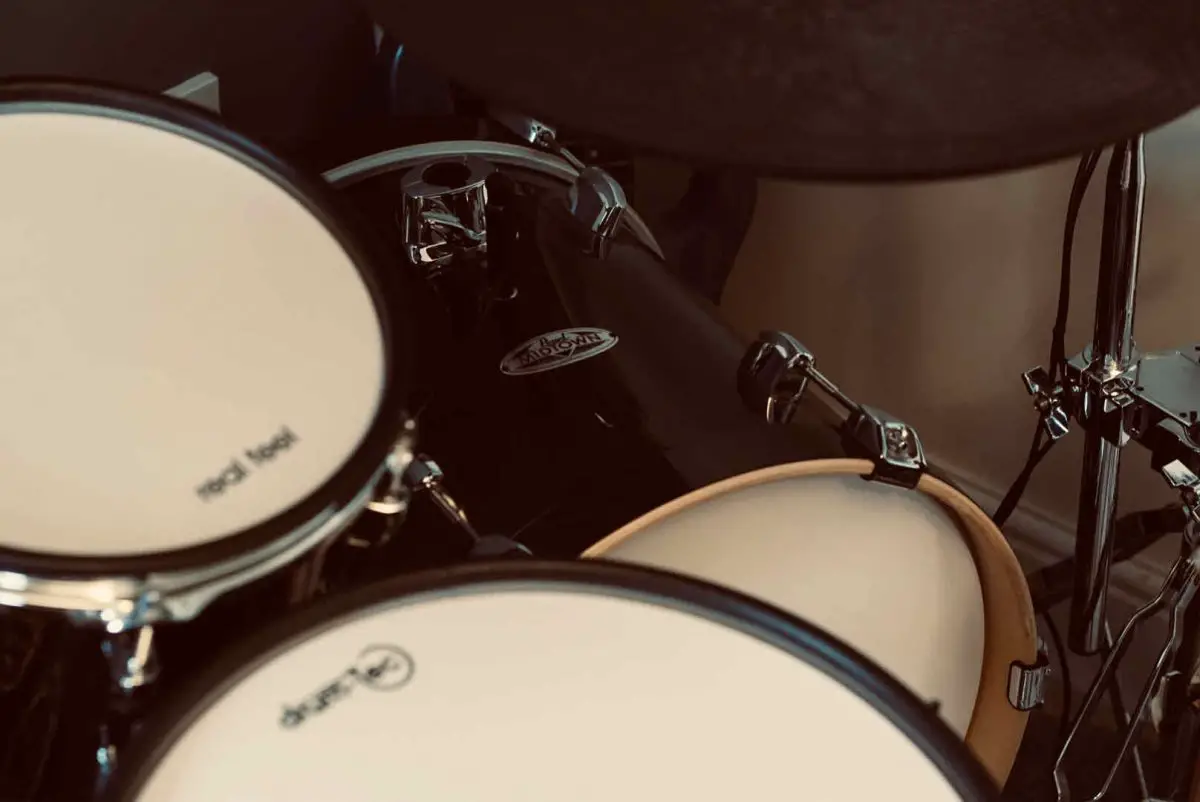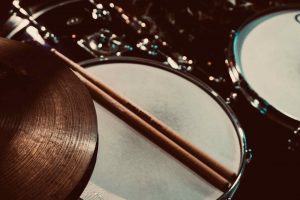Drumming can be a difficult hobby if you live in an apartment or don’t have tolerant neighbours. Fortunately, there are ways to reduce the volume of your drums and with it, less burden on the people you live near!
How can I soundproof my apartment drums?
It is possible to soundproof your apartment drums, but beware – it might not be easy. Be prepared – you will need to make compromises…
How realistic is it to play acoustic drums in an apartment?
Unfortunately, there are a lot of low-quality guides on soundproofing a room for drums which are not entirely upfront about what you can realistically expect.
The truth is, playing acoustic drums in an apartment is going to be very difficult, if not impossible, in a way that isn’t disruptive to your neighbours.
While you will find guides on how to ‘soundproof’ your room, realistically these options do very little unless you go the full hog and create a “room within a room”. You guessed it – this is physically building another room within an existing room to create a cavity on all the walls, floor and ceiling, to isolate the sound.
Living in an apartment means such extensive building work is either impractical or simply not allowed, especially if you’re renting your apartment. It’s simply not economical to do something like this when you might only live in that apartment for a few years.
So in this post, let’s forget about trying to play acoustic drums in an apartment and instead look at more portable or temporary options on how to practice the drums at home.
Build a quiet practice kit
As mentioned, playing acoustic drums at full volume won’t be compatible with a harmonious relationship with your neighbours – you need to make your kit quieter. There are a few options for this:
Drum & cymbal mutes
Drum mutes are rubber pads that you lay on the cymbals and drums to mute their sound. With the mutes on, your drums will produce more of a thudding sound, but you can still get a surprisingly good snare sound by keeping the snares engaged. Cymbals will sound a lot different, with a short, muted staccato sound, since the mutes will weigh them down and limit their ability to reverberate.
A key benefit of using drum mutes is they can quickly be taken off, so if you’re a gigging drummer and need your kit for a show, you can keep your real drum heads on the kit.
Another benefit to drum mutes is because they’re made of rubber or foam, they reduce the rebound compared to a normal drum head. This is good for practice as it helps you to build your strength – when you return to a normal drum, you may find over time you can play rolls faster or are less fatigued after a long set.
Unfortunately, though, mutes don’t feel as great on cymbals. They’ll also often not cover the entire playing surface of the cymbal, so you may need to adapt your style slightly. Fortunately, there are some other options…
Mesh drum heads
A more permanent solution to creating a quiet practice kit is to switch to mesh drum heads.
Like mutes, mesh heads dramatically reduce the sound created by the drum, but they feel very different to play. While rubber mutes significantly reduce the rebound on a drum head, mesh heads go the other way, and are more bouncy.
Look out for one, two, or even three-ply mesh heads. Single-ply heads are the most bouncy, while triple-ply heads are the least, but the trade-off is they are marginally more noisy to play. I’d recommend going for two or three-ply heads since single-ply heads don’t feel great and are definitely the budget option.
You can also reduce bounce by using lighter drumsticks. I prefer using lightweight Vic Firth Nova or maple drumsticks on electronic drums and mesh heads, and you can read more in my guide on the best drumsticks for electronic drums.
If you opt for mesh heads for your quiet practice kit, then your experience will be very similar to playing an electronic drum kit. In my personal opinion, this is worth considering, as you’ll see below.
Low volume cymbals
Low-volume cymbals are the closest you can get to standard acoustic cymbals but without all the volume.
Just like normal cymbals, these specialist cymbals are made of bronze. Where they differ is the fact that they’re covered with hundreds of holes across the cymbal’s surface. The result is a claimed 60-80% lower volume than ‘full volume’ cymbals. Remember though that as with any acoustic instrument, the strength you hit the cymbal will impact the volume.
Low-volume cymbals can be bought in packs ranging from around £150/$200 for a no-name/off-brand set, to around £340/$400 for a set of higher-end Zildjian L80 low-volume cymbals.
While these can reduce volume compared to standard cymbals, they may still be a bit too loud for apartment drumming. There are other options, though.
Plastic practice cymbal pads
A cheaper and even quieter alternative to low-volume cymbals is a set of plastic practice cymbal pads. While low-volume cymbals kept much of the musicalness of a standard cymbal, these plastic pads are very much about prioritising reduced volume over a nice sound.
With that in mind, expect no musical tone at all, just a thudding sound when you strike these pads. This is very similar to playing on an electronic drum kit, so if you are considering these, then you might want to compare them against an electronic kit. That way, you’d achieve the same low volume, but will be able to hear your own drumming via the headphones.
Consider switching to electronic drums
As I’ve mentioned above, if you’re having to compromise on sound quality to limit volume to an acceptable level, then I think it is worth considering going electric.
I’ve seen drum YouTubers bashing electronic drums because they don’t feel like real drums. But the truth is, if you’re having to compromise by using drum mutes, mesh heads, or plastic cymbal pads, then you’re already getting the same playing feel as an electronic kit.
With that in mind, in my opinion, you may as well go electric and have real drum sounds triggering as you play piped in through your headphones in line with what you’re playing. This to me feels like less of a compromise, playing electronic drums through headphones feels much more immersive than on a practice kit that can only produce staccato tapping sounds on each playing surface.
Build a soundproofing platform to isolate impact noise
So, you’re set on either an electronic kit or a practice kit, but that’s not all you need to do to soundproof your apartment drums.
Impact noise is the biggest issue for apartment drummers. Impact noise is the noise that is transmitted from impacts through floors or walls. Think of your bass beater hitting the bass drum pad over and over. Those vibrations will transmit through the floor and can be a real issue for neighbours of apartment drummers.
Fortunately, there are some solutions which you can see below. These are taken from my guide on cheaper alternatives to Roland Noise Eaters and you can learn more about impact noise caused by drums in my post about understanding if eDrums are still loud.
Tennis ball riser
A tennis ball riser is a large platform supported by tennis balls. The aim is to use the tennis balls to isolate the vibrations from your drums so they don’t travel through to the floor below.
This method can be very effective, but since you need to build a large platform or riser, it can be a difficult DIY project for beginners.
Roland Noise Eaters
An alternative to the tennis ball riser is to use Roland Noise Eaters or build your own DIY version. Roland Noise Eaters are boards large enough to support your hi-hat and bass pedal footboards, insulating them from the ground by a cushion of air or foam.
The official Noise Eaters are quite expensive, and building a DIY version is not too difficult. You can learn how to do it in my guide – build your own DIY Roland Noise Eaters.
FAQs
Wrapping up
Hopefully, with this guide, you’ll have learnt about some of the steps you need to take to reduce the volume of your drums to practice at home in an apartment. What to do next may depend on your individual situation.
If you’re starting from scratch with no drumkit, then you may be best starting the quietest kit you can, for example with an electronic kit and buying or building a tennis ball riser or Noise Eaters. This way, you won’t risk spending money on a set-up that doesn’t meet your low-volume needs, and having to start again.
Alternatively, if you already have an acoustic kit it might be more economical to try and reduce the volume of that, which might save money. You could try putting mesh heads on your kit and swapping the cymbals for low-volume alternatives. Further down the line, you might even want to consider converting your acoustic drums to electronic ones or invest in a tennis ball riser or Noise Eaters if more volume reduction is needed.


